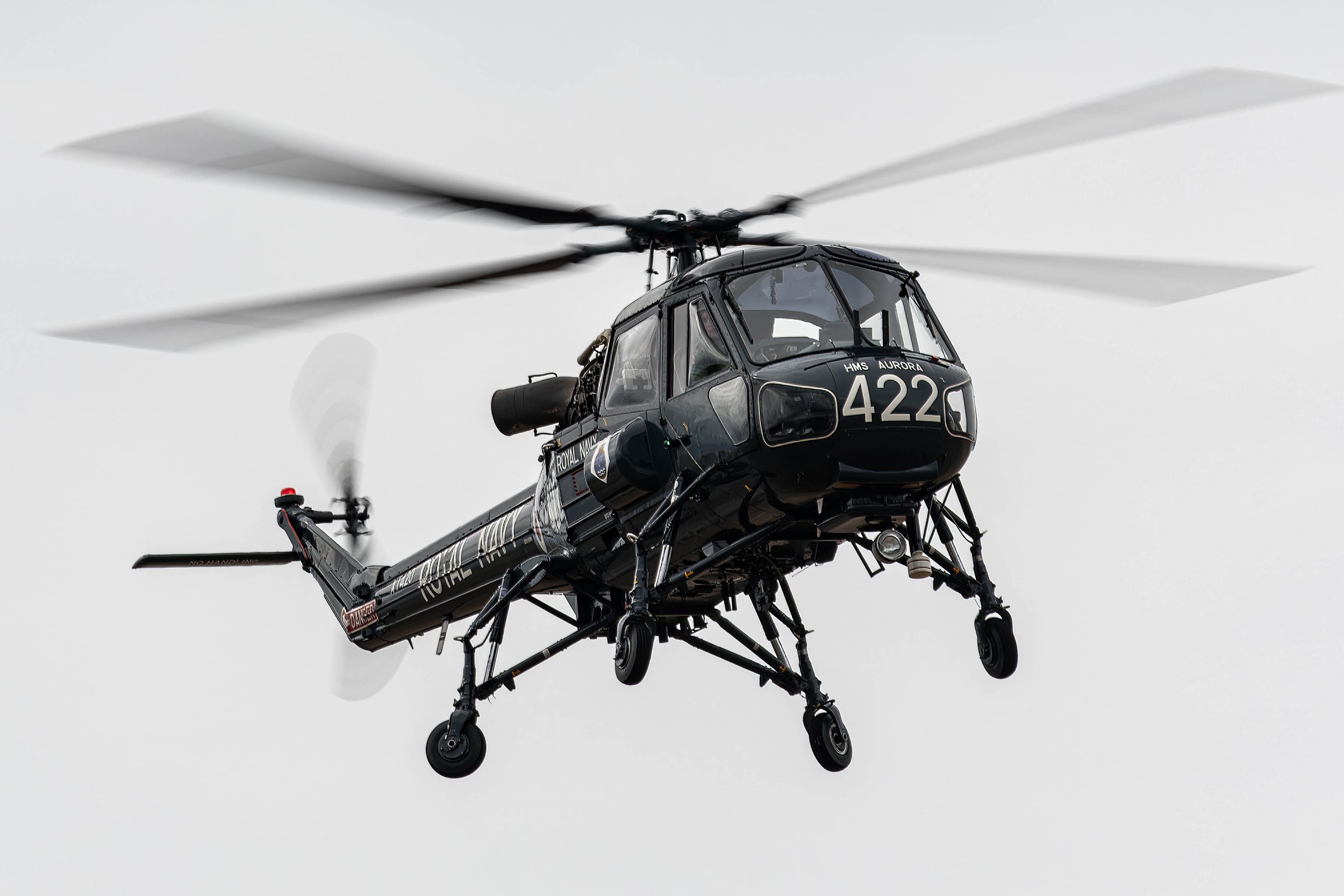
October 28 / Westland Wasp first flight
First Flight 28 October 1962
Westland Wasp
The Westland Wasp, a compact turbine-powered anti-submarine helicopter, emerged in the 1960s as a product of Westland Helicopters. It originated from the Saunders-Roe P.531 programme, the same initiative that produced the British Army’s Westland Scout. The Wasp was based on the earlier piston-engined Saunders-Roe Skeeter and was designed to meet the Royal Navy’s need for a helicopter small enough to land on a frigate’s deck while carrying a useful load of two homing torpedoes.
The genesis of the Wasp can be traced back to the Royal Navy’s requirement for a “Manned Torpedo-Carrying Helicopter” (MATCH). This need arose due to the increasing speed and attack range of submarine threats and the extended range at which these threats could be detected. Existing shipboard weapons lacked the necessary range, making MATCH a stand-off weapon system wherein the helicopter would carry the torpedo or other weapon to the target, guided by instructions on when and where to drop it. Unlike the larger Westland Wessex, the Wasp did not carry its own sonar and was dependent on coordination with its parent ship or other anti-submarine warfare (ASW) units.
The first prototype, the Saro P.531, took flight on 20 July 1958. These prototypes underwent rigorous testing by the Royal Navy, which included evaluations of several undercarriage layouts before settling on the final design. In September 1961, an order was placed for a pre-production batch of two “Sea Scouts.” The first flight of these pre-production units occurred on 28 October 1962, leading to full-scale production. A total of 98 units were procured for the Royal Navy. The Wasp also found international success, being exported to Brazil, the Netherlands, Indonesia, Malaysia, New Zealand, and South Africa, with 133 aircraft built in total.
The Wasp was essentially a navalized version of the Scout and was initially intended to be called the Sea Scout. It featured several unique design elements. It had a distinctive 4-wheeled castering undercarriage that allowed for easy maneuvering on small, pitching flight decks. The rotor blades could utilize negative pitch to adhere the aircraft to the deck until lashings were secured. Additional fuel tanks were installed in the cabin floor, and both the tail boom and main rotor blades were foldable for stowage in small hangars. The Wasp was equipped with a winch above the starboard rear door and a semi-automatic cargo release unit under the fuselage for carrying underslung loads. With a crew of two (a pilot and a missile aimer/aircrewman) and the capacity to seat three passengers, the Wasp was useful for short-range transport missions and casualty evacuation, with room for one stretcher across the rear cabin area.
Subsequent modifications included the ability to carry the Nord SS.11 wire-guided missile, necessitating the installation of an aimer’s sight in the left cockpit roof. Later, large inflatable emergency floats were added in sponsons on either side of the cabin to prevent the aircraft from capsizing in the event of ditching. The SS.11 missile, though effective for targeting small surface vessels and shore positions, had limited range and was eventually replaced by the AS.12 missile, which offered double the range.
In summary, the Westland Wasp played a significant role in naval aviation history. Its unique design features and operational flexibility allowed it to serve effectively across various navies worldwide, fulfilling a critical role in anti-submarine warfare and other naval operations.
Wasp Facts
Naval Origins: The Westland Wasp was specifically designed to meet the Royal Navy’s requirement for a compact helicopter capable of landing on the deck of a frigate while carrying a useful load of two homing torpedoes.
Prototype Beginnings: The first prototype, the Saro P.531, took its maiden flight on July 20, 1958. This prototype was part of the same program that produced the British Army’s Westland Scout.
Unique Undercarriage: The Wasp featured a distinctive 4-wheeled castering undercarriage, which allowed it to be easily manoeuvred on small, pitching flight decks. This design was crucial for operations on the limited space available on frigates.
Negative Pitch Capability: The Wasp could use “negative pitch” from its rotor blades to adhere to the deck until lashings were attached, providing stability during rough sea conditions.
Foldable Components: Both the tail boom and main rotor blades of the Wasp were foldable, allowing it to be stowed in the small hangars fitted to first-generation helicopter-carrying escorts.
International Success: Beyond its service with the Royal Navy, the Wasp was successfully exported to several countries, including Brazil, the Netherlands, Indonesia, Malaysia, New Zealand, and South Africa. In total, 133 aircraft were built.
Armament Evolution: Initially capable of carrying the Nord SS.11 wire-guided missile, the Wasp was later modified to carry the AS.12 missile, which had double the range of its predecessor, enhancing its capability to target small surface vessels and shore positions.
Emergency Floatation: To prevent capsizing in the event of ditching, the Wasp was fitted with large inflatable emergency floats in sponsons on either side of the cabin, addressing the top-heavy nature of the aircraft.
Versatile Roles: In addition to its primary role in anti-submarine warfare, the Wasp was useful for short-range transport missions and casualty evacuations. It could accommodate a crew of two and seat three passengers, with room for one stretcher across the rear cabin area.
Production Numbers: The Royal Navy procured 98 units of the Wasp, and with exports included, a total of 133 aircraft were built. This production run underscores the aircraft’s importance and success in fulfilling its designed roles.

















